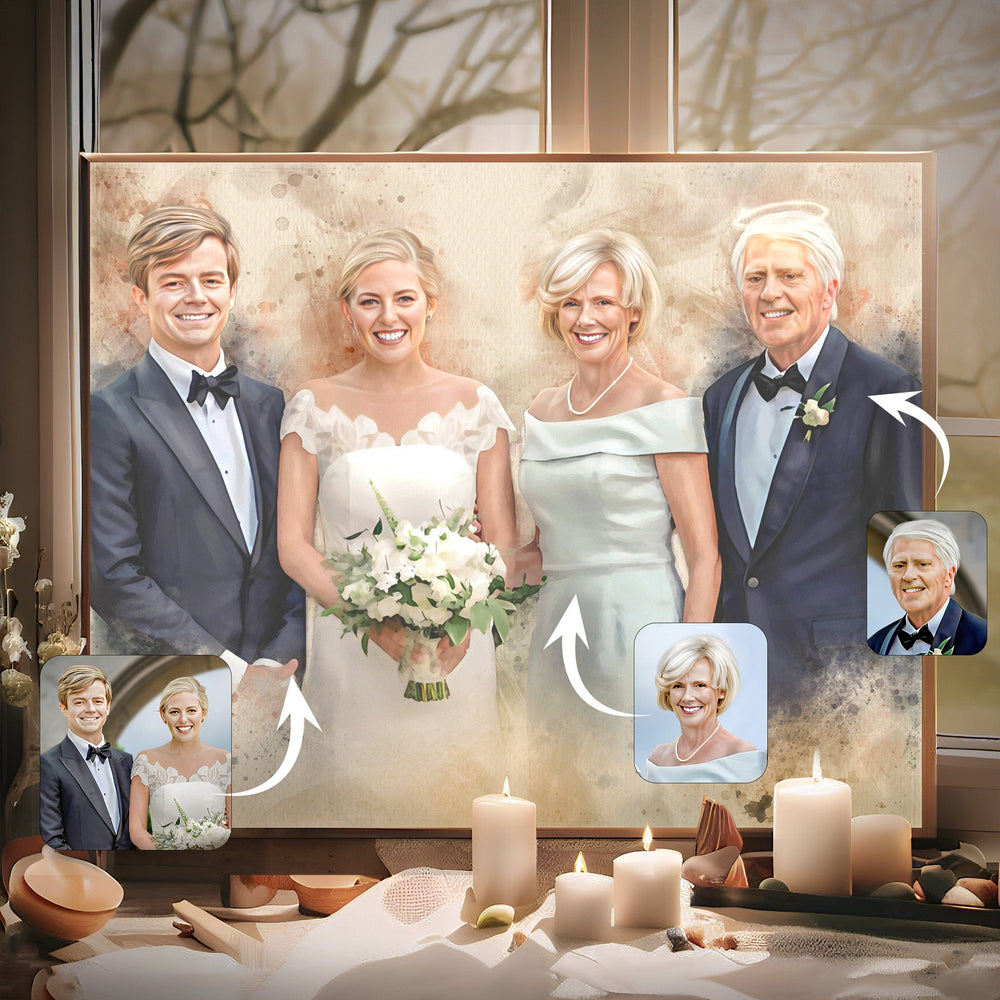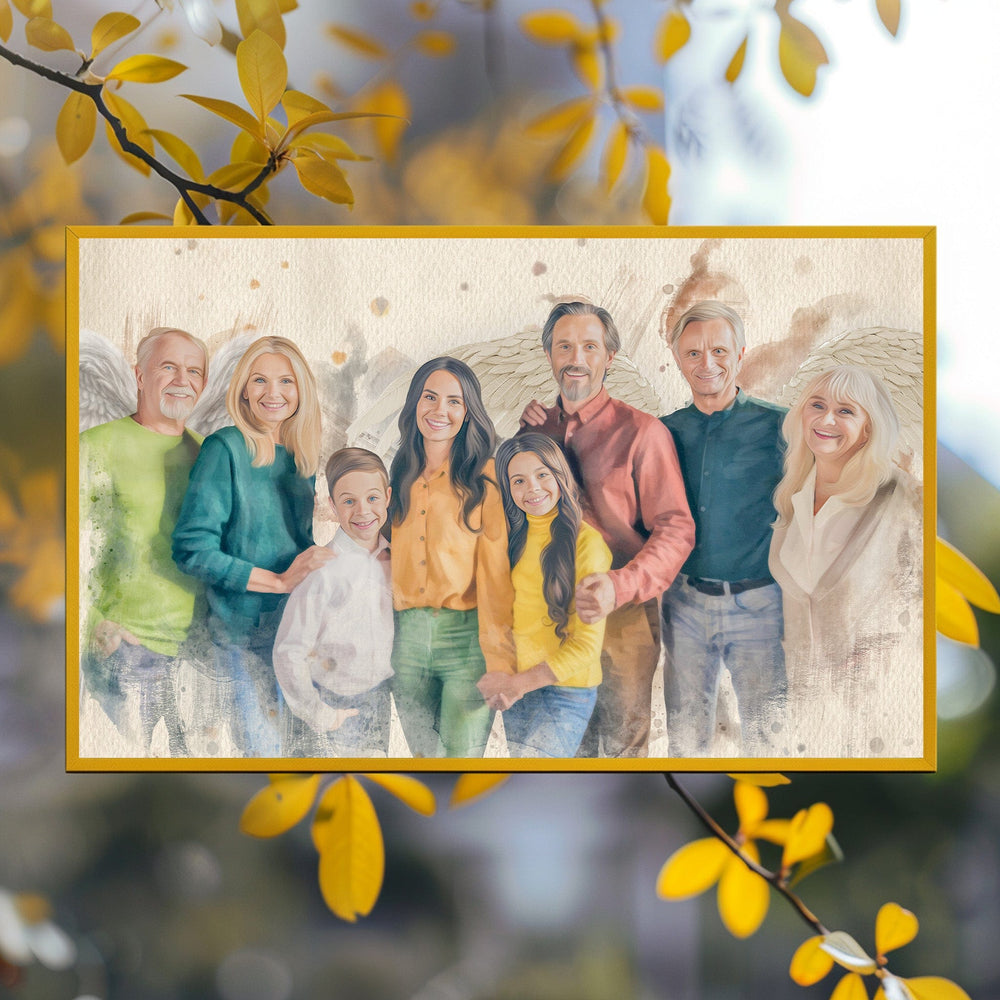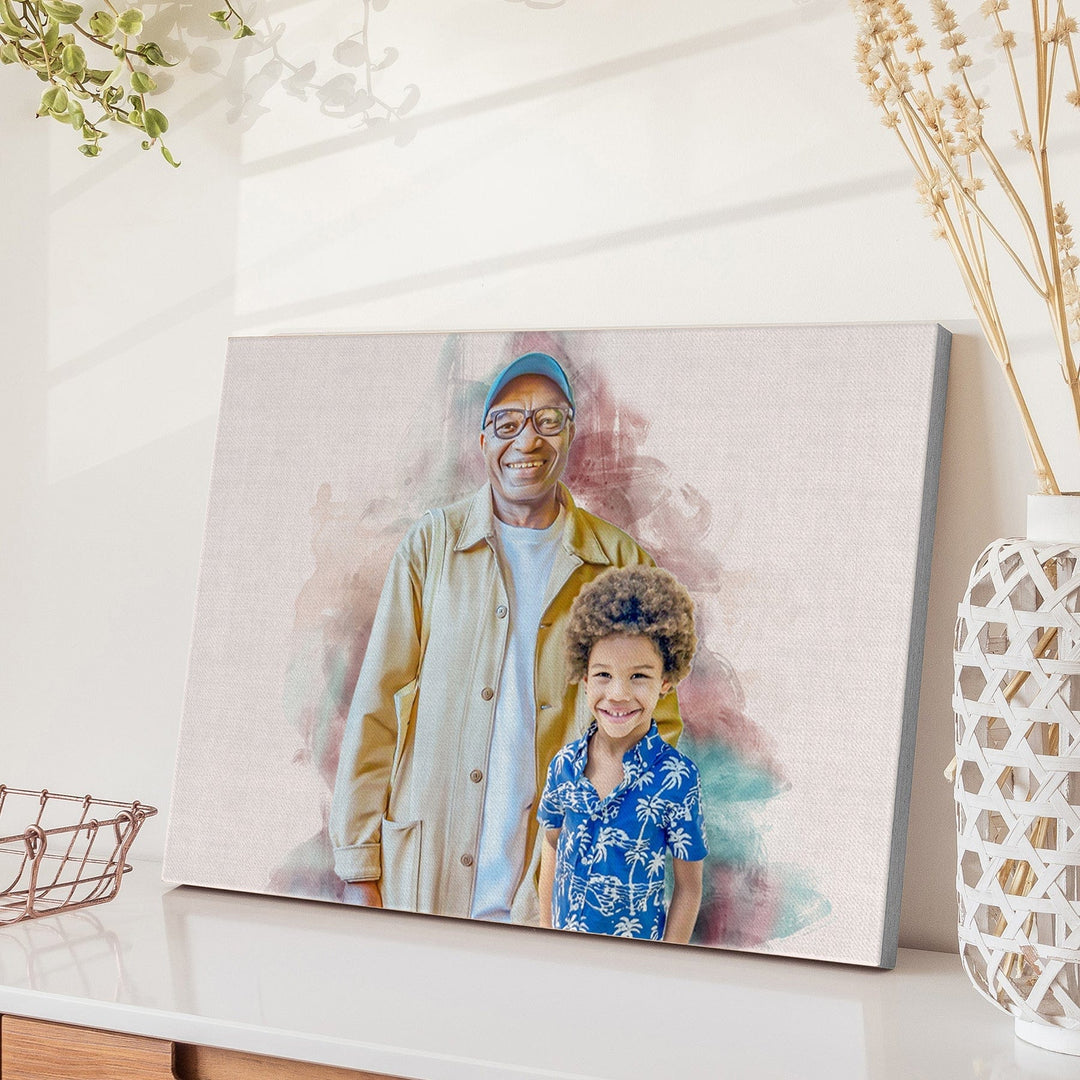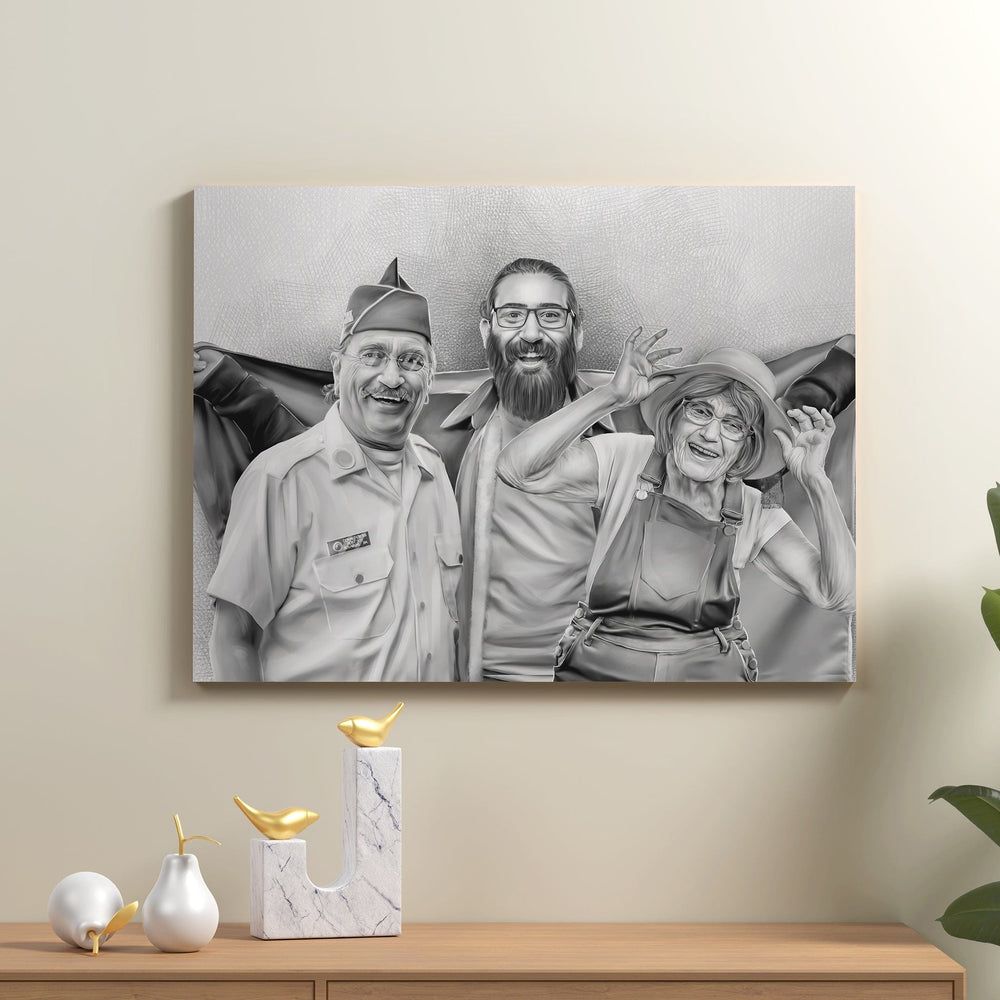How to Create Artistic Portraits: Techniques and Tips for Beginners
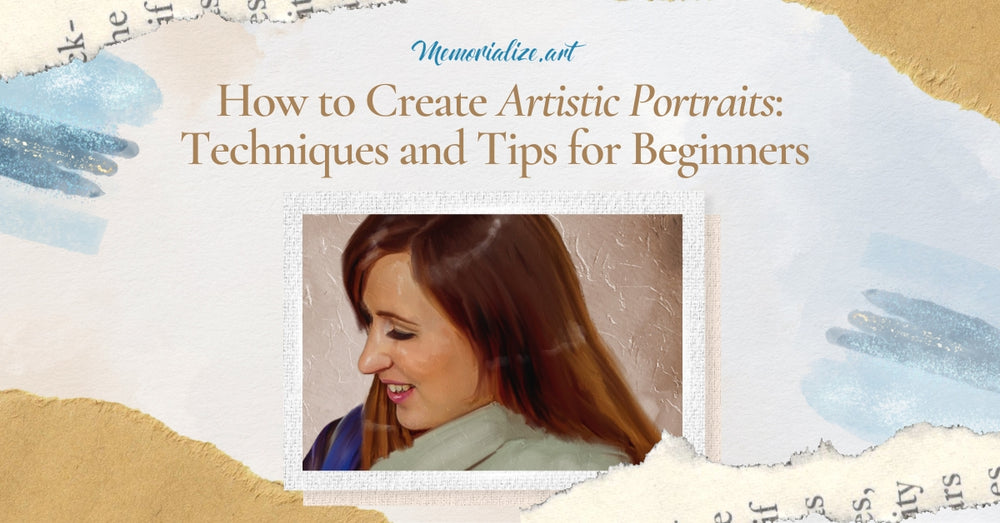
Embarking on the journey of portrait painting can be both exhilarating and intimidating for beginners. With countless talented artists showcasing their masterpieces online, it's easy to feel overwhelmed by the vast array of styles and techniques available. But every artist, regardless of their skill level, started somewhere, and with the right guidance, you too can transform your canvas into a killer portrait. In this comprehensive guide, we will delve into essential techniques, offer invaluable tips, and explore inspiring portrait painting ideas to kick-start your artistic voyage. So, whether you're searching for your unique style or merely looking to refine your skills, you're in the right place.

Essential Techniques for Artistic Portraits
Portrait painting, with its rich history and ever-evolving styles, has been a revered form of artistic expression for centuries. For beginners looking to step into this realm, understanding essential techniques is crucial to developing one's unique voice and vision. Here are some foundational techniques to help set you on the path to creating compelling artistic portraits:
Observation and Proportions
Before even touching brush to canvas, spend time observing your subject. Understand the relationships between facial features and practice drawing these proportions accurately. A slight misplacement of an eye or the angle of a nose can dramatically alter the likeness of the subject.
Underpainting
This technique involves creating a monochromatic version of your portrait, which serves as a roadmap for your final painting. Typically done in grays or browns, underpainting helps in establishing the tonal values, providing depth and volume to the portrait even before colors come into play.
Layering
Building up layers in your painting can add depth and richness to the final outcome. Starting with thinner layers and gradually applying thicker paint allows for better control over details and can produce a luminous quality to the skin tones.
Blending
Especially crucial in portrait painting, blending helps in achieving smooth transitions between different shades and tones. It's particularly important when working on the skin, ensuring there are no harsh lines that might make the face appear unnatural.
Capturing Light and Shadow
The interplay between light and shadow is crucial in giving a three-dimensional look to your portrait. Study the way light falls on your subject and the resulting shadows it casts. These elements can add drama, mood, and realism to your painting.
Tips for Creating Artistic Portraits
The world of artistic portraits is vast, and while techniques form the foundation, it's the tips and tricks that often propel a work from good to extraordinary. If you're keen on mastering the art of detailed portrait creation, here are some invaluable insights to guide you:
Invest in High-Quality Brushes
While talent plays a crucial role, the right tools can amplify your skills manifold. High-quality brushes offer better control, longevity, and precision. They ensure that every brushstroke, whether bold or delicate, translates your vision onto the canvas flawlessly.
Mastering the Selection of Colors
The colors you choose can breathe life into your portraits. Understand the emotions and reactions each color evokes. For instance, cooler tones might reflect tranquility, while warm shades can convey passion. Always have a vision in mind and select your colors accordingly.
Leverage White Color Paint
White isn't just a filler or background color. When used strategically, it can highlight, add volume, and create contrast. Especially in a detailed portrait, white can be employed to enhance facial features, add a gleam to the eyes, or create a light source in the artwork.
Details Make the Difference
Details can be a game-changer. Whether it’s the subtle texture of the skin, the intricate patterns of an iris, or the fine lines that showcase age and wisdom, investing time in refining these nuances can transform your piece. A detailed portrait captures the essence and personality of the subject, making it resonate with viewers.
Easy Portrait and Background Ideas for Beginners
Every artist, even the renowned ones, began with the basics, experimenting and discovering their signature style. To help you kick-start your journey and fuel your creativity, here are some straightforward portrait and background ideas for portraits that even beginners can embrace:
Start with Silhouette Portrait
A silhouette portrait is a great starting point for any budding portrait artist. It allows you to focus on the outline of your subject without getting caught up in intricate details. Using a range of brushes, from wide to narrow, can help in achieving the perfect silhouette.
Monochromatic Portrait
Before diving into a sea of vibrant color, consider starting with monochromatic themes. Choose a single color and explore its various shades and tones. Black, grey, and white can be particularly effective. Once you're comfortable, introduce a splash of vibrant color to make the portrait pop.
Abstract Backgrounds with Acrylic Colors
Acrylic colors are versatile and perfect for beginners. They dry quickly and can be layered easily. For your background, consider blending and merging multiple acrylic colors without any specific pattern. This abstract approach provides a captivating contrast to a detailed portrait in the foreground.
Nature-Inspired Backgrounds
Take inspiration from the world around you. A simple gradient resembling a sunset, a soft blue hinting at the sky, or even a vibrant green symbolizing dense foliage can elevate your portrait. With a decent range of brushes, these backgrounds can be achieved with soft, seamless strokes.
Experiment with Facial Expressions
One of the best ideas for portraits, especially for beginners, is to play with facial expressions. A smile, a frown, a look of surprise—each expression tells a different story. Practicing these will not only enhance your skills but also give you insights into capturing emotions.
Trends in Artistic Portraits
The world of artistic portraits is dynamic, ever-evolving, and reflective of societal shifts, personal narratives, and the innermost musings of artists. For beginners eager to carve a niche for themselves in this vibrant space, staying updated with the latest trends can provide invaluable inspiration. Here are some of the most compelling portrait trends that have captured the art community's imagination:
Minimalist Faceless Portrait

Order your minimalist faceless portrait here
Minimalist faceless portrait captures the essence of a subject without revealing facial features, leaving much to interpretation and imagination. This form of portraiture emphasizes form, posture, and the play of light and shadow. With minimalistic brushstrokes, artists can convey profound emotions, stories, or moods, offering a refreshing deviation from traditional portraiture. For those wanting to explore this trend, using light colors, especially a delicate touch of peach color paint, can add a soft, ethereal quality to the artwork.
Faceless Self Portrait

Get your faceless self portrait here
A profound exploration of self-identity, the faceless self portrait trend allows artists to express their essence without the constraints of facial representation. Whether through bold strokes or soft hues, these portraits are introspective, challenging both the artist and the viewer to look beyond the obvious and delve into deeper interpretations.
Child Portrait

Timeless and evergreen, child portraits capture the innocence, wonder, and spontaneity of youth. Artists are increasingly exploring diverse skin tone colors, from deep browns to rosy pinks, to create lifelike renditions. The finest quality brushes are crucial here, allowing for the detailed work needed to capture the delicate features and expressions unique to children.
Personalized Portraiture

Get your own personalized portrait painting here
Personal portrait painting is all about individual narratives and personal stories. More than just a likeness, these portraits delve deep into the subject's character, experiences, and essence. By blending varied skin tone colors and using light shades for highlighting, artists create a nuanced, multi-dimensional representation of the individual.
Baby Watercolor Painting

Order baby watercolor painting here
The gentle fluidity of watercolors is perfectly suited for capturing the soft, tender aspects of infancy. The trend of baby watercolor painting focuses on the delicate features and moods of babies. With an emphasis on light colors and subtle gradients, these paintings evoke a sense of nostalgia and warmth. And, as always, the use of the finest quality brushes ensures that every little detail, from a baby's curl to their tiny fingers, is captured with precision.
FAQs
What makes a good portrait painting?
A captivating portrait painting is more than just a visual representation; it's a confluence of technique, emotion, and narrative. At the heart of a compelling portrait is its ability to convey the subject's essence, revealing not just physical likeness but also their character, emotions, and even stories.
How do you start a portrait painting?
Starting a portrait painting can be both an exciting and daunting endeavor, especially for beginners. The first step is often gathering your materials, including a palette of varied skin tone colors and a selection of the finest quality brushes to ensure the utmost precision in your strokes. Next, consider your subject deeply; aim to understand not just their physical attributes but also their personality and essence. It's often beneficial to start with light colors as a base, gradually building up to the more detailed areas of the portrait.
Remember, patience is your ally; take time to build layers and textures, continually refining as you go. And most importantly, don't be afraid to make mistakes, as every error is a step forward on your path to mastery.
How do you make a portrait painting look realistic?
To make a portrait painting look realistic, artists should select the right skin tone colors, use high-quality brushes for precision, and carefully depict light and shadow to add depth. Starting with light base colors and gradually layering details enhances realism. Crucially, capturing emotion, especially in the eyes, establishes a genuine connection with viewers.



